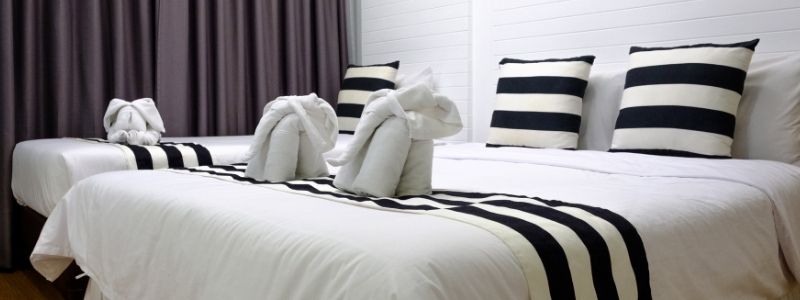Are you in the market for a new mattress or bed? Should you get an all-natural organic mattress or a visco foam mattress? Or perhaps something else entirely? We researched every important detail of these two types of mattresses, from the way they work to the support and pressure relief they offer.
But first, here’s what you must know about home mattress trials and what makes a good foam mattress.
Memory Foam Mattress Essentials
Viscoelastic foam is made of open cells, billions of balloons with holes in them. When you sit on it, organic moves from one cell to another and the mattress contours your body in a unique fashion, relieving pressure points and supporting your weight.
With regular foam mattresses, which are made of closed cells, the organic in the compressed cells pushes back against you causing pressure points that constrict circulation at the area of contact. The result is discomfort and even pain over time. When you lie on a visco foam mattress there is no organic left in the cells to push back and cause discomfort. The organic is spread to adjoining cells and the foam simply ‘melts’ under you to provide long-term, balanced support, and comfort.
Organic Mattress Essentials
The organic bandwagon was put in motion a few years ago by organic food produce. Specialists said at the time that chemicals and fertilizers in our food is harmful. Now we use organic shampoo and organic makeup and want to sleep on organic mattresses. Why is that? Are they more comfortable? Do they improve the quality of our sleep?
- Organic mattresses are gaining popularity because they are free of fire retardants, pesticides, dioxins, formaldehyde and any other chemicals that may damage health.
- Recent findings also showed that petroleum-based foam mattresses may be a source of cancer-causing chemicals. During use, all these foams break down in dangerous by-products: toxic dust under the bed and formaldehyde gas in the air.
- Additionally, the average mattress seems to contain around a pound of fire retardants called PDBE (polybrominated diphenyl ethers), already banned in Europe and the US. These PDBE have only been recently banned (January 2005) so the mattress you currently sleep on probably still contains them. Tests show that these chemicals may be especially toxic to kids, potentially affecting their hearing, memory and even intelligence after sleeping on PDBE-treated cribs.
Organic means 100% natural, non-treated and free of any human-made products that enhance the product’s natural qualities. Organic mattresses are made of organic cotton, organic latex and/or organic wool which haven’t been dyed or bleached, artificially softened or hardened.
In order to be considered organic, wool has to abide by these specific legal requirements:
- Livestock feed and forage used in the third gestation trimester must be organic.
- Use of hormones, synthetic hormones and genetic engineering is prohibited.
- Use of synthetic pesticides (internal, external and on pastures) is prohibited.
- Producers must encourage livestock health through good cultural and management practices.
Organic mattresses (made of wool, natural cotton or natural latex) usually have a firm core (made of organic latex or innersprings) and a comfort layer (organic cotton or wool).
- All-natural rubber (or latex) is obtained by tapping the sap of the rubber trees, which is then whipped up into foam.
- 100% organic cotton is obtained from cotton fields that haven’t been treated with any chemicals for at least three years.

